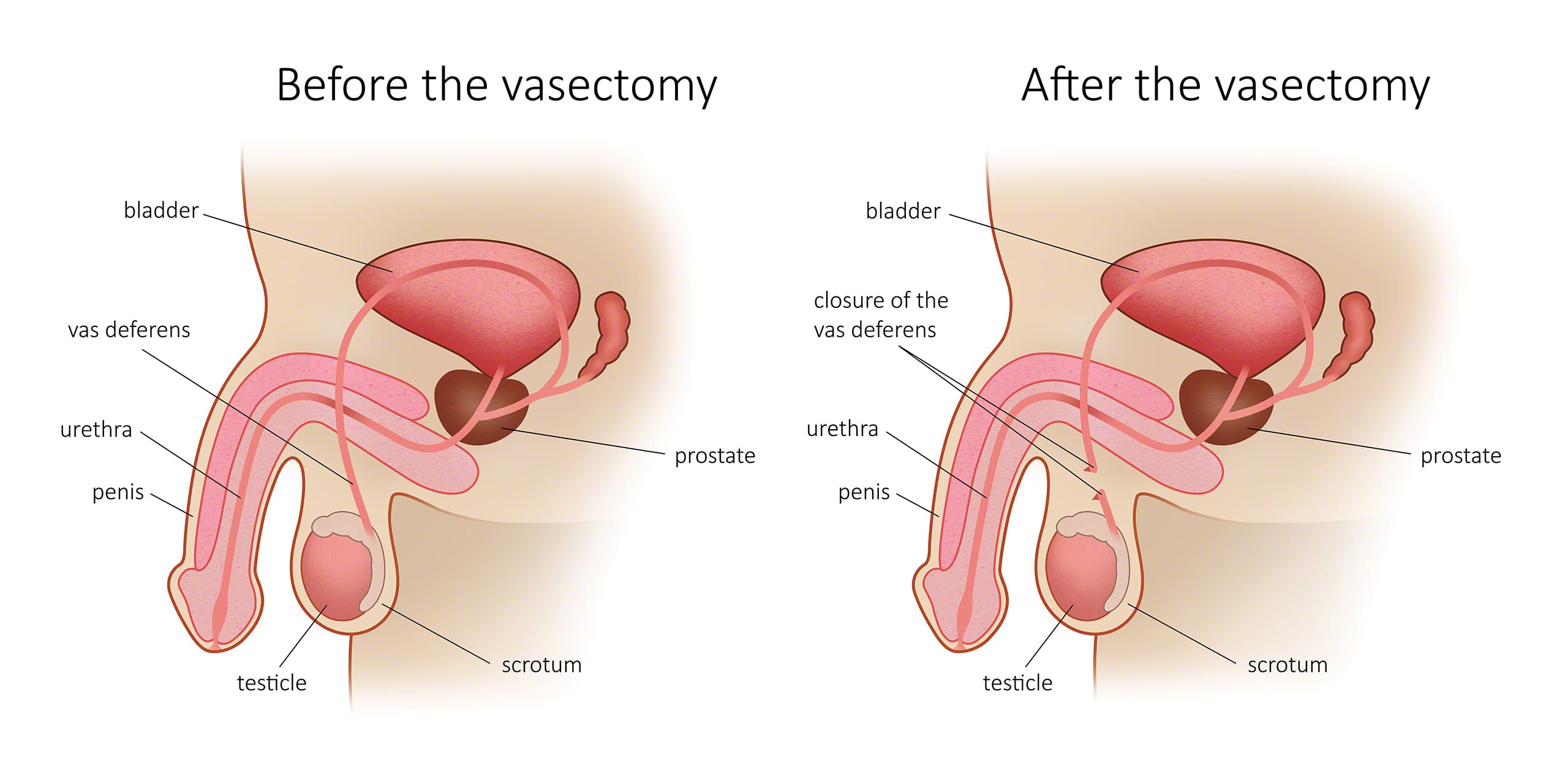What are the different kinds of vasectomy?
There are several types of vasectomy procedures, each with its own method of blocking or cutting the vas deferens (the tubes that carry sperm). The main types of vasectomy include:
1. Conventional (Incision) Vasectomy:
- In a conventional vasectomy, the doctor makes one or two small incisions in the scrotum to access the vas deferens. The vas deferens is then cut, a small portion may be removed, and the ends are either tied, stitched, or sealed. The incisions are closed with stitches or left to heal naturally.
2. No-Scalpel Vasectomy (NSV):
- In a no-scalpel vasectomy, a small puncture is made in the scrotum instead of an incision. The doctor uses specialized tools to access and block the vas deferens through this small opening. The puncture heals quickly, and there are typically fewer complications, less bleeding, and a shorter recovery time compared to the conventional method.
3. Open-Ended Vasectomy:
- In an open-ended vasectomy, one end of the vas deferens is sealed, while the end connected to the testicle is left open. This method is thought to reduce post-vasectomy pain and pressure in the testicles, although it’s not as commonly performed as other methods.
4. Vas-Clip Vasectomy:
- In a vas-clip vasectomy, a clip is placed around the vas deferens to block the flow of sperm. This method does not involve cutting or sealing the vas deferens, and is sometimes marketed as being more easily reversible. However, it may be less effective than traditional methods.
The choice of vasectomy technique depends on factors such as the patient’s preference, the doctor’s experience, and the specific clinical circumstances. All methods are generally highly effective for permanent male contraception.
Are vasectomies typically considered reversible?
Vasectomies are typically considered a permanent form of contraception, but they can sometimes be reversed through a surgical procedure known as a vasectomy reversal. However, the success of reversing a vasectomy depends on several factors, and it is not guaranteed.
Vasectomy Reversal:
The reversal procedure is called a vasovasostomy, where the severed ends of the vas deferens are reconnected, allowing sperm to enter the semen again. In some cases, a more complex procedure called a vasoepididymostomy is required if there is a blockage in the epididymis (a coiled tube where sperm matures).
Factors Affecting Reversal Success:
- Time Since Vasectomy: The longer the time since the vasectomy, the lower the chances of a successful reversal. Success rates are generally higher if the reversal is performed within 10 years of the vasectomy.
- Surgical Technique Used: The skill and experience of the surgeon play a significant role in the success of the reversal.
- Scar Tissue and Blockages: If there is significant scar tissue or blockages in the vas deferens or epididymis, it may reduce the chances of success.
- Overall Health and Fertility: The man’s overall health and fertility, as well as his partner’s fertility, also affect the likelihood of a successful pregnancy post-reversal.
Success Rates:
- Patency Rate: This refers to the return of sperm to the semen. It can be as high as 90% if the vasectomy was performed within the last 3 years, but it decreases over time.
- Pregnancy Rate: The chances of achieving pregnancy post-reversal range from 30% to 70%, depending on the factors mentioned above.
Considerations:
While vasectomy reversal is possible, it is more complex, costly, and less reliable than the initial vasectomy. Some men who wish to have children after a vasectomy opt for alternatives like sperm retrieval and assisted reproductive technologies (e.g., in vitro fertilization).
In summary, while vasectomies are often reversible, it is not always successful, and they should generally be considered a permanent solution for contraception.

Leave a Reply
You must be logged in to post a comment.